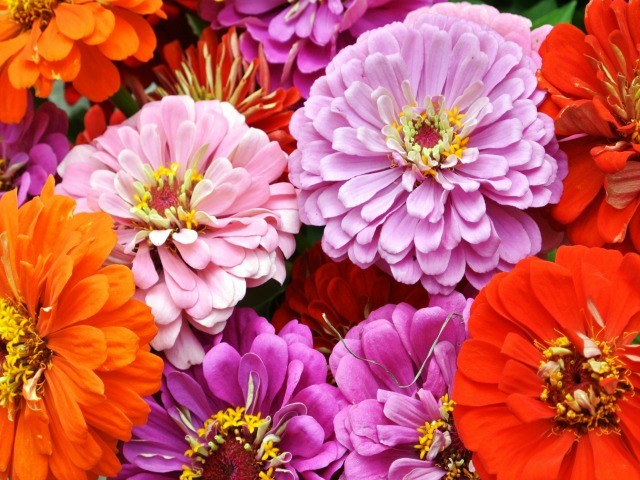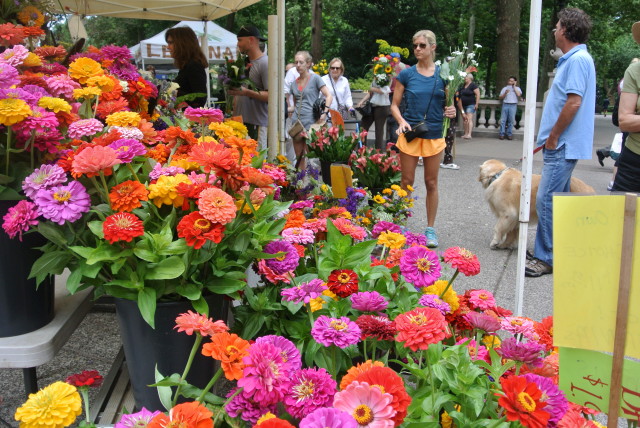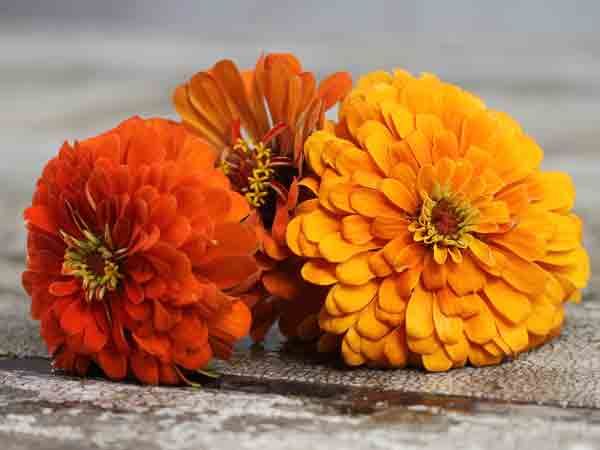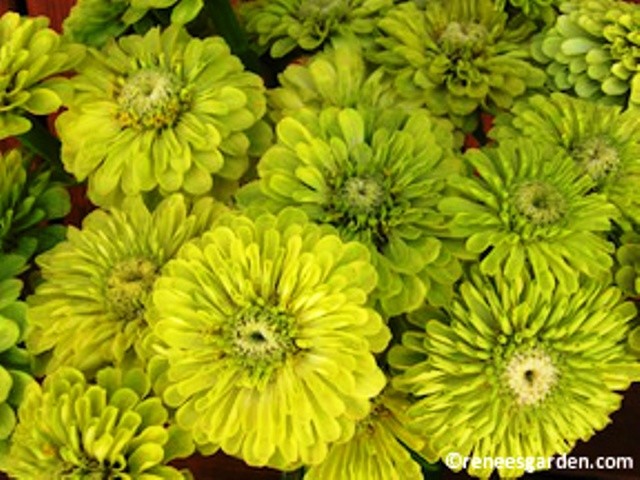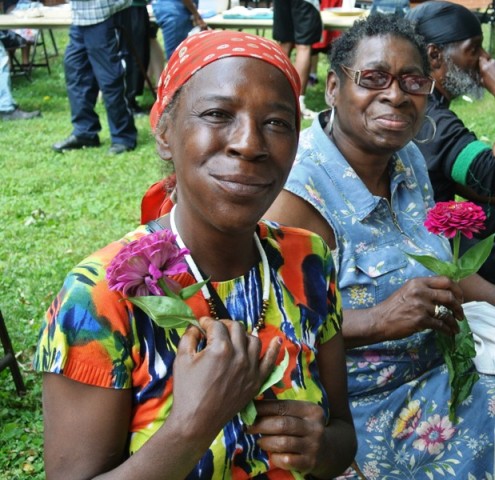Every Saturday morning when I stroll over to Rittenhouse Square, I’m starstruck by the plethora of zinnias that greet me with their dazzling array of colors and flower heads.
There are 3 or 4 flower stands at this weekly market but one grower, Triple Tree Flowers, has a flare for displaying flowers that woos passer-bys and has them waiting with baited breath to buy either prearranged bouquets or hand pick them. Plus he is the only flower stall that sells zinnias.
Because of him, the neighborhood is caught up in what I call Zinnia Happiness.
So what is it about zinnias that make us feel like we can never get enough of them?
I don’t know about you but I wouldn’t think of not ordering zinnia seeds each spring to sow in my garden. Only dahlias come close to offering the showiness, brilliance of color and size of bloom similar to these members of the Aster family.
Their benefits are plentiful.
Undemanding, they can be grown almost anywhere in the garden as long as they receive full sun.
Another positive – they’re butterfly magnets AND the more you deadhead them and use as cut flowers, the more flowers they produce. But their real allure?
Zinnias make people happy. Their cheery faces convey a feeling of optimism to all whose eyes land on them.
A short background on these lovelies from Landreth Seeds
“They are primarily a native of Mexico where a rambling plant with daisy like orange to yellow blossoms grows, but some forms of wild zinnias have been found as far north as Colorado and as far south as Guatemala.
The first zinnias were discovered in Mexico and brought to Europe by the Spaniards in the 1500’s. Zinnia peruviana was an altogether ugly sight, a sparsely foliated, rangy plant which produced small flowers whose petals were often various muddy shades of yellow and orange. This plant was known throughout Europe by the mid-1600’s, but it was not cultivated much. Dr. Johann Gottfried Zinn of Gottingen University in Germany wrote the first description of the plant and because of this, the zinnia is named for him.
In 1796, a zinnia was brought to Europe, possibly by way of Brazil, (when it was presented to Linnaeus – the great Swedish scientist and medical doctor – it had been labeled Calthe de Bresil, the Brazilian marigold) and it was this zinnia, Zinnia elegans, which the world fell in love with. Zinnia elegans is the ancestral plant from which our modern day zinnias have developed. This zinnia produced larger, lusher flowers in colors which ranged from crimson to pale lavender.
In 1798, Landreth offered the first zinnia seed for sale to the public in the United States. Americans were not interested. The French, however, were becoming interested in the zinnia and by 1856 had developed the first truly double forms of the flower. All of Europe and Great Britain took a liking to the double flowered zinnias and by 1864 purple, orange, red and salmon colored zinnias had made their way back to North America and into the gardens of Americans.
During the early 1860’s, the first dwarf zinnia varieties, Zinnia haageana, made their way from Mexico to the United States. By 1876, the Philadelphia seedhouse, Henry A. Dreer, was offering dwarf zinnia seeds for sale to the public. Persian Carpet, a Zinnia haageana variety, is still available today.
Today there are more than 20 known species of zinnia, but only three are commercially available, Zinnia elegans, Zinnia augustifolia, a small daisy-like zinnia, and Zinnia haageana. Zinnia blossoms come in many varieties and are often described in the following way:
Single Flowered – Blossoms have one row of petals and the center of each flower is exposed.
Semi-Double Flowered – Blossoms have several to many rows of petals, but the center is exposed and fully visible.
Fully Double Flowered – Blossoms have many rows of petals and the center of the flower is hidden by the petals.
Cactus Flowered – Blossoms have long petals. The edges of the petals roll under and the entire petal twists to create a unique flower form.” Source – Landreth Seeds
Sources I use to buy Zinnia Seeds –
Baker Creek Heirloom Seeds – Orange King is one of my all time favorites.
It produces a variety of bright orange toned flowers that make a bold statement. I grow in my cutting garden and containers ~ it never disappoints.
And from Renee’s Garden, there are several varieties I love but one that continues to be a winner each year is Zinnia Green Envy.
It’s unusual chartreuse color is a knock-out in any garden border or as a cut flower.
This summer while I continue giving away flowers to strangers on the street for Give A Flower, Get A Smile, zinnias have become a symbol of this movement locally for one reason only – they make people smile!
NOW IT’S YOUR TURN: What flowers are you growing in your garden or buy as cut flowers this summer?
**To learn more about Give A Flower, Get A Smile, check out our You Tube video and Facebook page.

